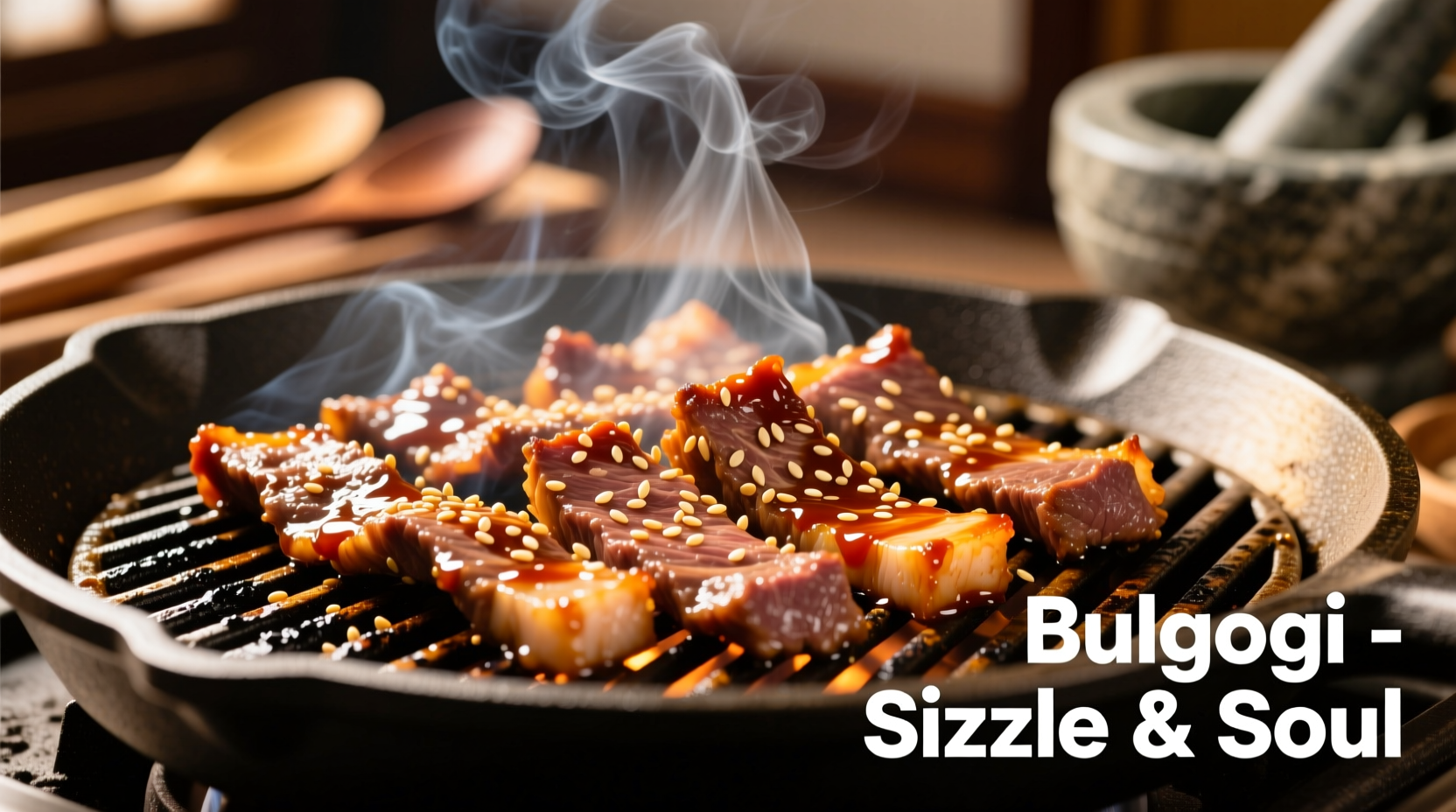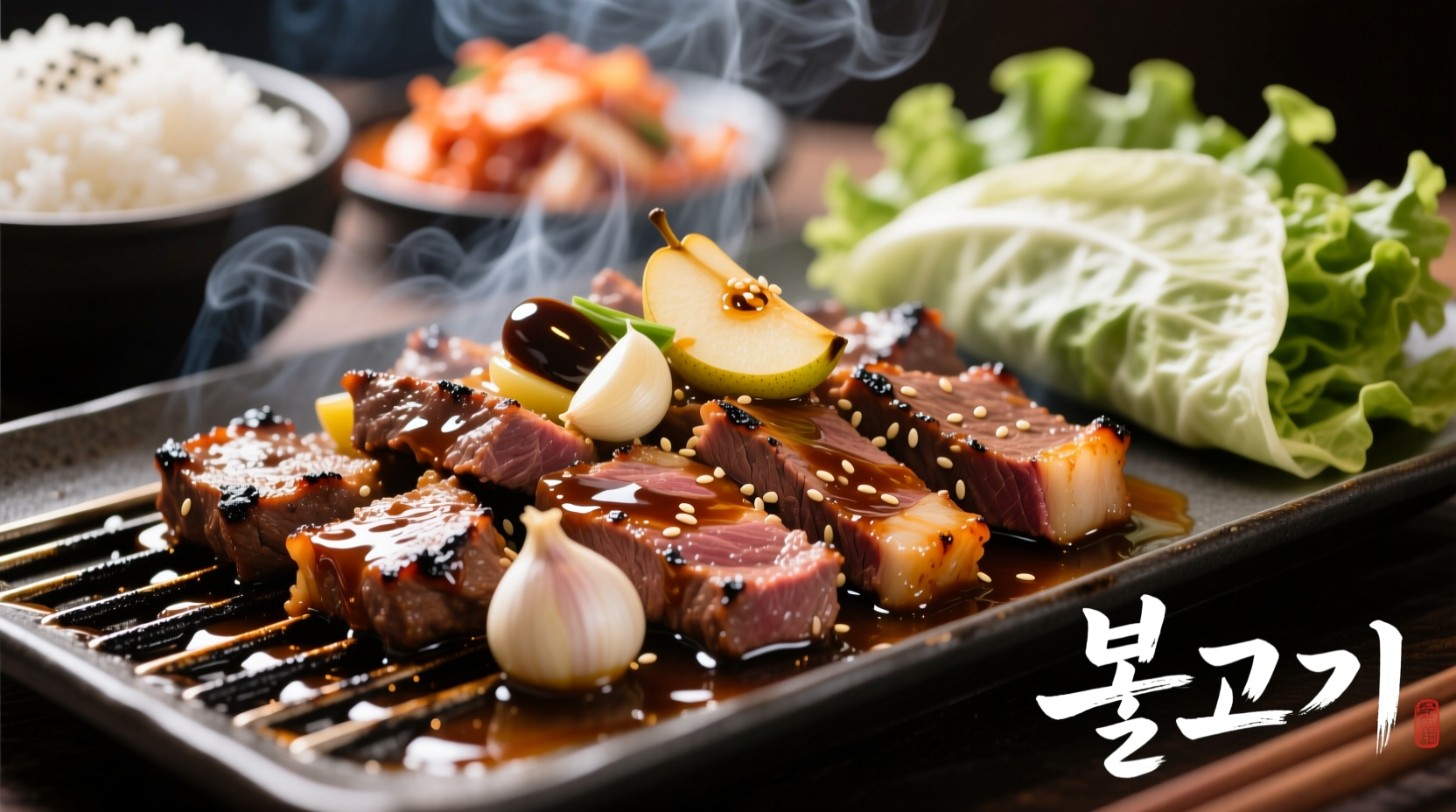Ever wonder what makes bulgogi the star of Korean BBQ menus worldwide? This beloved Korean dish delivers an unforgettable flavor experience that balances multiple taste sensations in every bite. As someone who's documented authentic spice usage across Asia for nearly a decade, I've tasted bulgogi in Seoul's street markets, Busan's seaside restaurants, and traditional hanok houses—and I'll break down exactly what makes this dish so special.
The Core Flavor Profile: What Makes Bulgogi Unique
Bulgogi's distinctive taste comes from its carefully balanced marinade, which transforms simple beef into something extraordinary. The primary flavor components work together in perfect harmony:
- Sweetness: From Asian pear, sugar, or honey that caramelizes during cooking
- Savory umami: From soy sauce and fermented ingredients
- Nutty notes: From toasted sesame oil and seeds
- Subtle fruitiness: From Asian pear that also tenderizes the meat
- Garlic depth: Fresh garlic that mellows but remains present
Unlike many grilled meats that rely primarily on smoke or char, bulgogi's magic happens before the meat ever hits the grill. The marinade penetrates the thinly sliced beef, creating a flavor experience that's both complex and approachable—even for those new to Korean cuisine.
| Dish | Primary Flavor Profile | Texture | Key Distinguishing Features |
|---|---|---|---|
| Bulgogi | Sweet-savory with garlic and sesame notes | Tender, slightly chewy | Marinated before cooking, glossy finish |
| Galbi (Korean BBQ ribs) | Richer, more intense beef flavor | Firm yet tender | Bone-in, less sweet marinade |
| Yakiniku (Japanese BBQ) | Cleaner, more subtle seasoning | Varies by cut | Often dipped in tare sauce after grilling |
| Teppanyaki steak | Savory with butter notes | Firm, seared exterior | Cooked with minimal pre-marinating |
How Texture Complements Flavor
Bulgogi's texture is as important as its taste. The traditional preparation involves slicing beef across the grain into paper-thin pieces, which:
- Allows maximum marinade absorption
- Creates quick, even cooking without drying
- Produces that signature tender-but-slightly-chewy mouthfeel
- Enables the caramelization that develops complex flavor compounds
When properly cooked, bulgogi has a delicate char on the edges while remaining succulent throughout. The Asian pear in the marinade isn't just for sweetness—it contains natural enzymes that tenderize the meat without making it mushy, creating that melt-in-your-mouth quality that defines exceptional bulgogi.

Regional Variations and Authenticity Markers
While bulgogi has become popular globally, authentic versions maintain specific characteristics that distinguish them from imitations. According to Korea's Cultural Heritage Administration, traditional bulgogi preparation varies by region:
- Seoul-style: Balanced sweetness with noticeable sesame notes
- Gyeongsang Province: Slightly less sweet, more emphasis on soy sauce depth
- Jeolla Province: May include subtle chili notes while maintaining primary sweet-savory profile
Authentic bulgogi never overwhelms with spice—the heat level should be minimal to nonexistent. The sweetness should be present but not cloying, and the garlic should enhance rather than dominate. Many Korean chefs note that the ideal bulgogi has what they call "eight parts sweet to two parts salty" (팔감이염) in its flavor balance.
How to Identify Quality Bulgogi
When ordering or preparing bulgogi, look for these markers of quality:
- Marinade penetration: The meat should be evenly colored throughout, not just on the surface
- Glossy appearance: A sheen from sesame oil and caramelized sugars
- Subtle fruit aroma: Hint of Asian pear or apple, not artificial sweetness
- No excessive liquid: Properly marinated meat shouldn't be swimming in sauce
- Char without burning: Light caramelization on edges, not blackened meat
Many Western adaptations over-marinate the beef, resulting in mushy texture or overwhelming sweetness. Authentic Korean preparation typically marinates for 2-4 hours—enough for flavor absorption without compromising texture.
Common Misconceptions About Bulgogi's Flavor
Several misconceptions about bulgogi's taste persist:
- "Bulgogi is very spicy" - Traditional bulgogi contains no chili peppers; gochujang-based variations exist but aren't classic
- "It tastes like teriyaki" - While both are sweet-savory, bulgogi has distinctive sesame, garlic, and fruit notes absent in teriyaki
- "All bulgogi is the same" - Regional variations and family recipes create significant flavor differences
- "The sweetness comes from sugar alone" - Asian pear provides natural sweetness and tenderizing enzymes
Understanding these distinctions helps you appreciate authentic bulgogi's nuanced flavor profile rather than expecting a one-dimensional sweet meat experience.
Experiencing Bulgogi Like a Korean Food Insider
To fully appreciate bulgogi's flavor complexity, Koreans traditionally eat it with:
- Fresh lettuce or perilla leaves for wrapping
- Ssamjang (spicy dipping paste) for added depth
- Steamed rice to balance the rich flavors
- Kimchi for contrasting tanginess
- Garlic slices grilled alongside the meat
This combination creates a symphony of flavors and textures in each bite—cool lettuce, warm meat, spicy paste, and tangy kimchi all working together. The bulgogi itself serves as the sweet-savory centerpiece that ties everything together.
Frequently Asked Questions
Is bulgogi supposed to be sweet?
Yes, authentic bulgogi has a noticeable sweetness balanced with savory elements. The sweetness comes primarily from Asian pear and sugar in the marinade, creating a characteristic sweet-savory (ganjamsal) flavor profile that defines the dish. However, it shouldn't be cloyingly sweet—the ideal balance is approximately eight parts savory to two parts sweet.
Does bulgogi taste like teriyaki?
While both are sweet-savory grilled meats, bulgogi has a more complex flavor profile than teriyaki. Bulgogi features distinctive garlic, sesame oil, and Asian pear notes that teriyaki lacks. Teriyaki tends to be simpler with primarily soy sauce and mirin flavors, while bulgogi has more layered seasoning with multiple aromatic ingredients working in harmony.
Why does my bulgogi taste bitter?
Bitterness in bulgogi usually comes from overcooking the marinade's sugar content, causing it to burn. It can also result from using too much sesame oil (which becomes bitter when overheated) or from marinating for too long with certain ingredients. Authentic preparation uses just enough sugar to caramelize without burning and toasts sesame oil gently to preserve its nutty flavor without bitterness.
What does bulgogi taste good with?
Bulgogi pairs perfectly with steamed rice, fresh lettuce wraps, ssamjang (spicy dipping sauce), and kimchi. The cool lettuce balances the warm meat, the rice absorbs the flavorful juices, ssamjang adds spicy depth, and kimchi provides refreshing tanginess that cuts through the richness. Traditional Korean side dishes like spinach (sigeumchi-namul) and bean sprouts (kongnamul) also complement bulgogi's flavor profile beautifully.
Does bulgogi have a strong garlic taste?
Bulgogi contains garlic, but it shouldn't have an overpowering garlic flavor. The marinade typically uses enough garlic to provide aromatic depth without dominating the other flavors. During cooking, the garlic mellows and integrates with the other ingredients, creating a subtle background note rather than a sharp, raw garlic taste. Authentic bulgogi achieves a harmonious balance where no single ingredient overwhelms the others.











 浙公网安备
33010002000092号
浙公网安备
33010002000092号 浙B2-20120091-4
浙B2-20120091-4